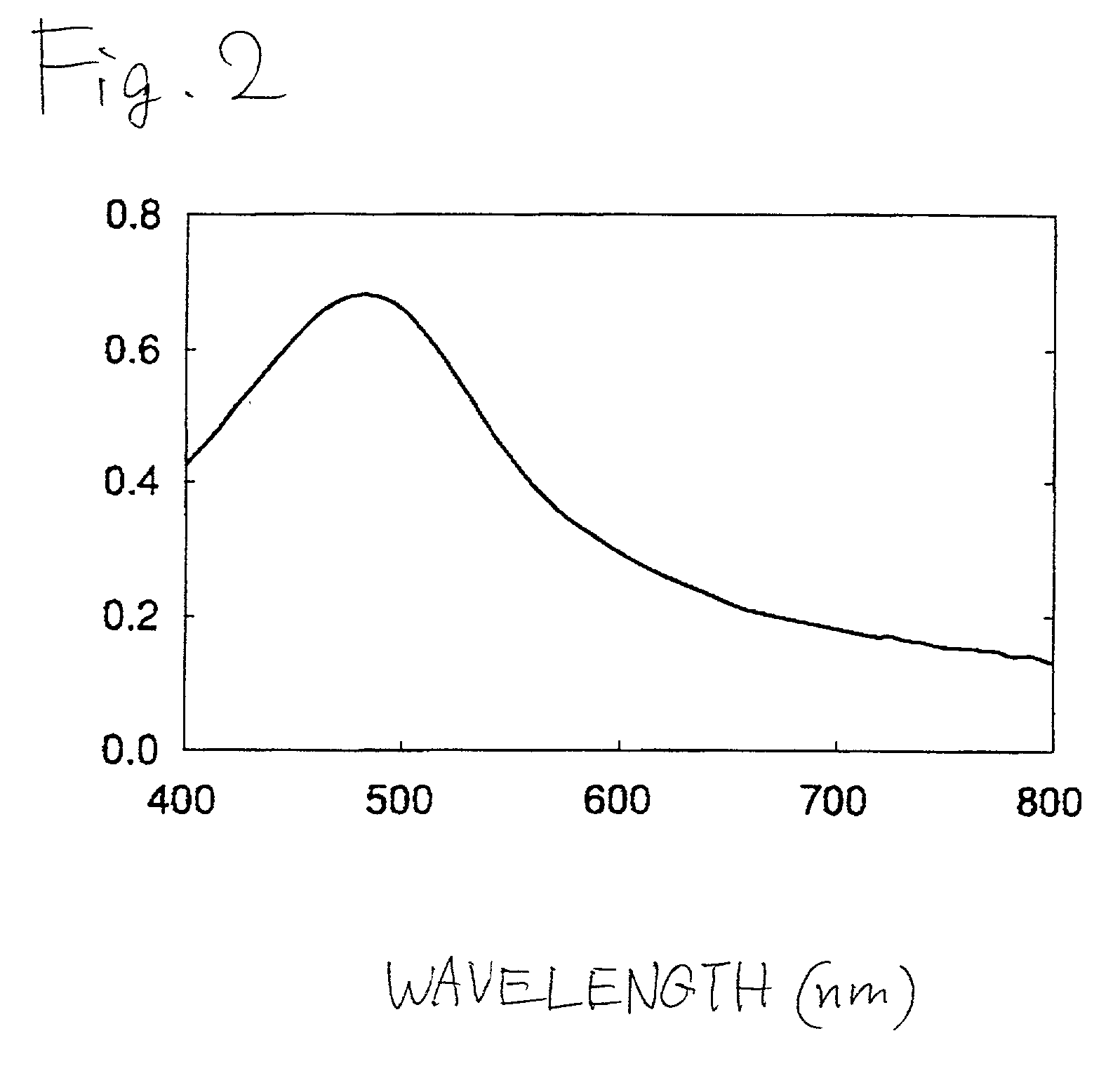Optical recording medium and optical recording method
a recording medium and optical recording technology, applied in optical recording/reproducing/erasing methods, instruments, thermography, etc., can solve the problems of affecting the accuracy of optical recording, and requiring expensive reading equipment, etc., to achieve excellent information keeping quality, high recording density, and high sensitivity
- Summary
- Abstract
- Description
- Claims
- Application Information
AI Technical Summary
Benefits of technology
Problems solved by technology
Method used
Image
Examples
examples 7 to 9
[0099] Optical recording media was prepared in the same manner as with Example 2 with the exception that the recording layer contained 10 parts by weight of poly(dimethylsilicone) (Example 7), 20 parts by weight of poly(dimethylsilicone) (Example 8) and 10 parts by weight of poly(butadiene) (Example 9), respectively, based on 100 parts by weight of ultrafine palladium particles. As a result of evaluation, the optical recording media (Examples 7 to 9) provided modulation degrees of 55%, 51% and 50%, respectively.
examples 10 and 11
[0100] An optical recording medium (Example 10) was prepared in the same manner as with Example 6 with the exception that 100 parts by weight of pentamethine cyanine dye was added to the recording layer as an organic dye, based on 100 parts by weight of ultrafine silver-platinum particles, and an optical recording medium (Example 11) was prepared in the same manner as with Example 6 with the exception that 200 parts by weight of pentamethine cyanine dye was added to the heat insulating layer as an organic dye, based on 100 parts by weight of amorphous fluororesin. As a result of evaluation, the optical recording media (Examples 10 and 11) provided modulation degrees of 59% and 57%, respectively.
[0101] According to the invention, there can be provided write once-type optical recording media for short-wave laser beams with a wavelength of 500 nm or less, which are high in density and sensitivity, excellent in record keeping quality, and low in cost, and have been difficult to be reali...
PUM
| Property | Measurement | Unit |
|---|---|---|
| Thickness | aaaaa | aaaaa |
| Thickness | aaaaa | aaaaa |
| Particle size | aaaaa | aaaaa |
Abstract
Description
Claims
Application Information
 Login to View More
Login to View More - R&D
- Intellectual Property
- Life Sciences
- Materials
- Tech Scout
- Unparalleled Data Quality
- Higher Quality Content
- 60% Fewer Hallucinations
Browse by: Latest US Patents, China's latest patents, Technical Efficacy Thesaurus, Application Domain, Technology Topic, Popular Technical Reports.
© 2025 PatSnap. All rights reserved.Legal|Privacy policy|Modern Slavery Act Transparency Statement|Sitemap|About US| Contact US: help@patsnap.com


